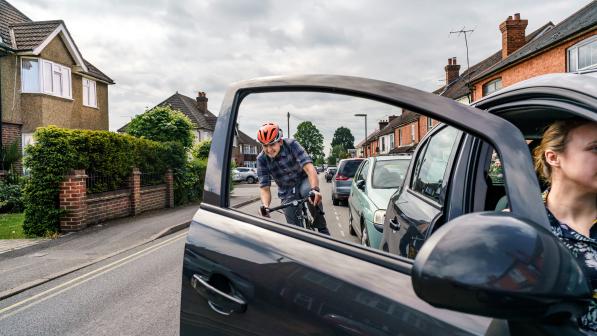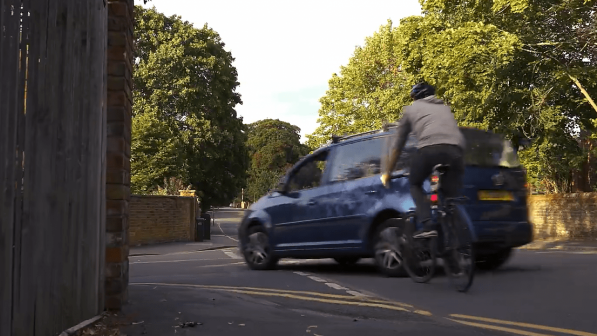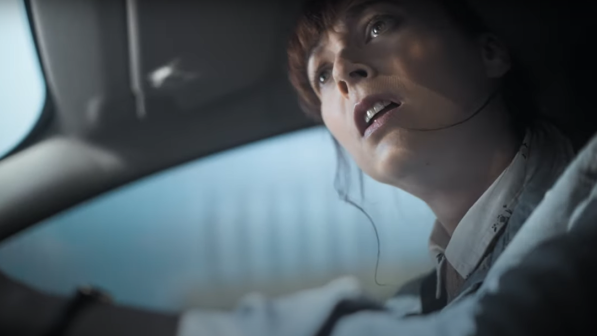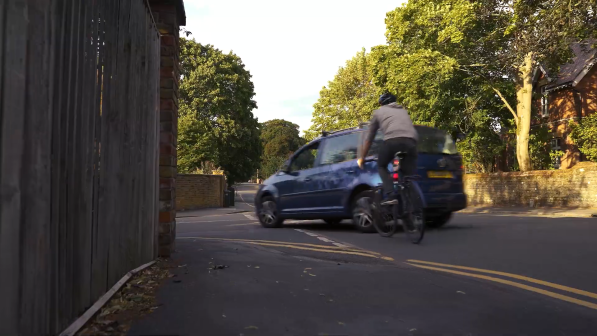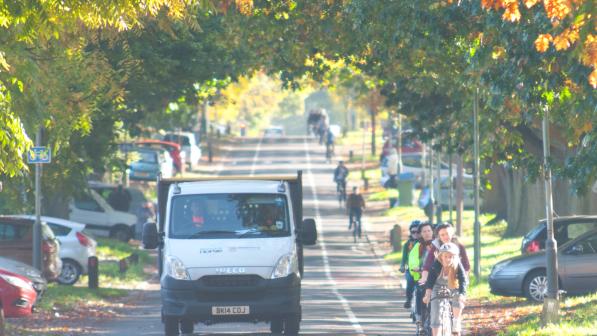Why changes to the highway code need a huge awareness campaign

Two weeks ago, the Department for Transport (DfT) made a number of announcements to launch its ‘Summer of Cycling and Walking’ campaign, including the implementation of long-awaited changes to the Highway Code (HC) to reduce the danger on our roads for people walking and cycling.
When campaigning and lobbying for these improvements, we always made it clear that altering the HC would not by itself be enough, and that a substantial public awareness and education campaign would be needed not just to explain the changes, but to involve people so they understand why they’re needed.
The outrage and hysterical reaction by some commentators to a tweet from Jeremy Vine last weekend demonstrates why such an awareness campaign is so badly needed, with a substantial marketing budget.
Angela gets so angry when she’s driving
Before mentioning what Jeremy tweeted, it’s helpful to start with the reaction.
Journalist Angela Epstein has been writing about how she’s hated cyclists since 2011, and on Tuesday Jeremy invited Angela and myself onto his show to discuss the controversy.
Sadly, internet and phone signal problems scuppered my contribution, giving Angela free rein to vent, stating how she gets incredibly angry when she sees cyclists riding side by side rather than in single file, and asking: “What gives them the right to block the road when there is a 30mph limit?”
Frankly, Angela, if seeing two people cycling side by side gets you so angry when you’re behind the wheel, you need to ask yourself whether you have the temperament, patience or empathy for other road users to be driving. And if you think a 30mph limit is a target speed for driving, you definitely don’t understand either the purpose of speed limits or the guidance on appropriate speed.
Get off the road – you don’t pay road tax
But Angela’s lack of tolerance was surpassed by Alex Phillips’s prejudice and alternative facts. Alex hosts GB News’ afternoon programme, and before interviewing me on Tuesday introduced the piece by saying that her view on cyclists was that they should get off the road, because they don’t pay road tax.
Alex is entitled to her own opinion, but not her own set of facts. Notwithstanding my explanation about the roads being paid for via general taxation, Alex stuck Trump-like to her alternative facts on who pays for what, and what entitlement that gives them on the roads.
I wouldn’t normally criticise a journalist or presenter like this, but I’ve chosen to do so today because this level of intolerance, Angela’s professed hatred, and Alex’s lack of knowledge about the subject she’s expressing an opinion about, helps fuel a toxic attitude on our roads, particularly towards people cycling. It’s irresponsible, undermines attempts to improve road safety, and it has consequences.
I don’t know what budget DfT have set aside for its public awareness campaign for the new HC, but I suspect the department needs to increase it!
Riding three or four abreast
So, what did Jeremy say to light the touch paper?
He was a passenger in a car driving on a long, straight section of a single carriageway rural road when the car came up behind a group of eight cyclists in a compact group. He subsequently posted the video of the car approaching the cyclists, tweeting that people cycling in the country “should be encouraged to ride 2, 3 and 4 abreast like this”.
People who cycle in the country should be encouraged to ride 2, 3 and 4 abreast like this. For the following reasons:
— Jeremy Vine (@theJeremyVine) August 8, 2021
1. It calms the traffic behind them
2. It makes it less easy for bad drivers to attempt dangerous passes
3. It is more pleasant and sociable for them. pic.twitter.com/vqi4dsuUSs
Personally, I wouldn’t have referenced riding three or four abreast the way Jeremy did, because I’m not sure that’s an accurate description of what this group of cyclists was doing.
I’m not claiming to be an expert in this field, but with ‘head-on’ camera or video footage, it’s often difficult to gauge distance, which can seem distorted.
What’s clear from the footage, however, is that this was a tightly packed group of eight cyclists. If you look at the position of the wheels on the road, this looks like pairs of cyclists riding behind each other, but slightly overlapping the rear wheel of the person in front on occasion, which anyone accustomed to group riding will know can happen.
If this was a case of four cyclists riding adjacent to each other, they’d probably be overlapping into the opposite lane, or at least on the white line in the middle of the road, which isn’t the case.
It’s easier and safer to overtake a bunch
Jeremy’s essential point was that it can often be safer for people to cycle in a group, not least because doing so discourages drivers from overtaking when it’s not safe, and that it’s easier for people to overtake a compact bunch of cyclists than a longer line of cyclists in single file.
Chris Boardman’s explanation of this latter point is difficult to improve on, but in the context of Jeremy’s clip it’s also really obvious.
If you look closely at the group of cyclists, they’re not occupying much road space. A large estate car would probably take up about the same amount of space and would be nearer to the white line in the middle of the road than they are.
If they were riding in single file, a couple of metres apart, the line or riders would be around 30 metres long, and it would take much longer for a driver to overtake them. Overtaking this group of riders would have been easier than overtaking a car, a driver would just need to wait for an appropriate gap in the traffic to cross into the other lane and overtake.
Rule 66 and proposed changes
It’s at this point that I should point out that Rule 66 of the current version of the HC states that you should never ride more than two abreast. It goes on to say that you should ride in single file on narrow or busy roads and when riding around bends.
That wording has caused immense confusion, because the last place you want a driver to overtake you is when you’re cycling round a bend, so it may well be safer to ride two abreast while doing so to discourage unsafe overtaking at that point.
That’s why the DfT consulted on changes to Rule 66, with Cycling UK proposing a new rule that:
“[Cyclists should] be considerate of the needs of other road users when riding with another and in small or large groups. You can ride two abreast and it is often safer to do so, particularly in larger groups or when accompanying children or less experienced riders. Switch to single file if you consider it safer to allow drivers to overtake.”
Instead of commanding when to ride single file, this wording makes it clear that you can ride two abreast, and immediately highlights reasons why this can be safer. It then suggests riding in single file only where you – the cyclist – consider it safe to allow drivers to overtake.
We’re anticipating that this or a similar version will be included in the revised HC, which should be published before the end of the year but won’t be officially implemented until early next year.
For the moment, the Rule 66 guidance is still that cyclists shouldn’t ride more than two abreast.
However, as I’ve outlined already, I’m not sure that this group of cyclists was doing that and, even if technically they were, this wasn’t causing an obstruction: they were occupying a similar amount of road space to a large estate car; it was easy to safely overtake them, and it’s hard to see how anyone would have been delayed more than momentarily by waiting to pass them.
But that doesn’t make a great story, when Angela and Alex want to be outraged, because they must get past, they’re angry behind the wheel, they don’t understand how the tax system works, and they’re determined to cling onto alternative ‘facts’.
